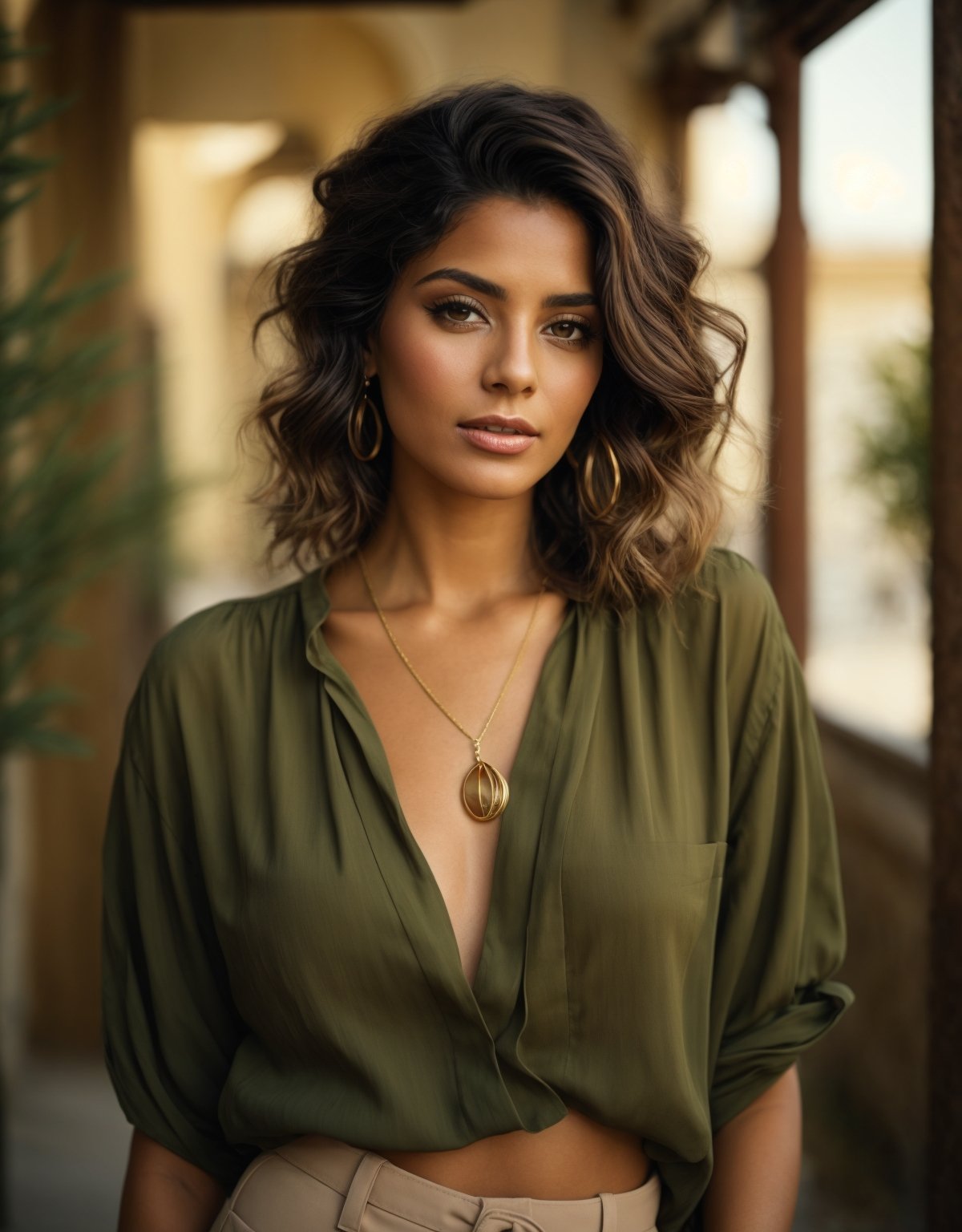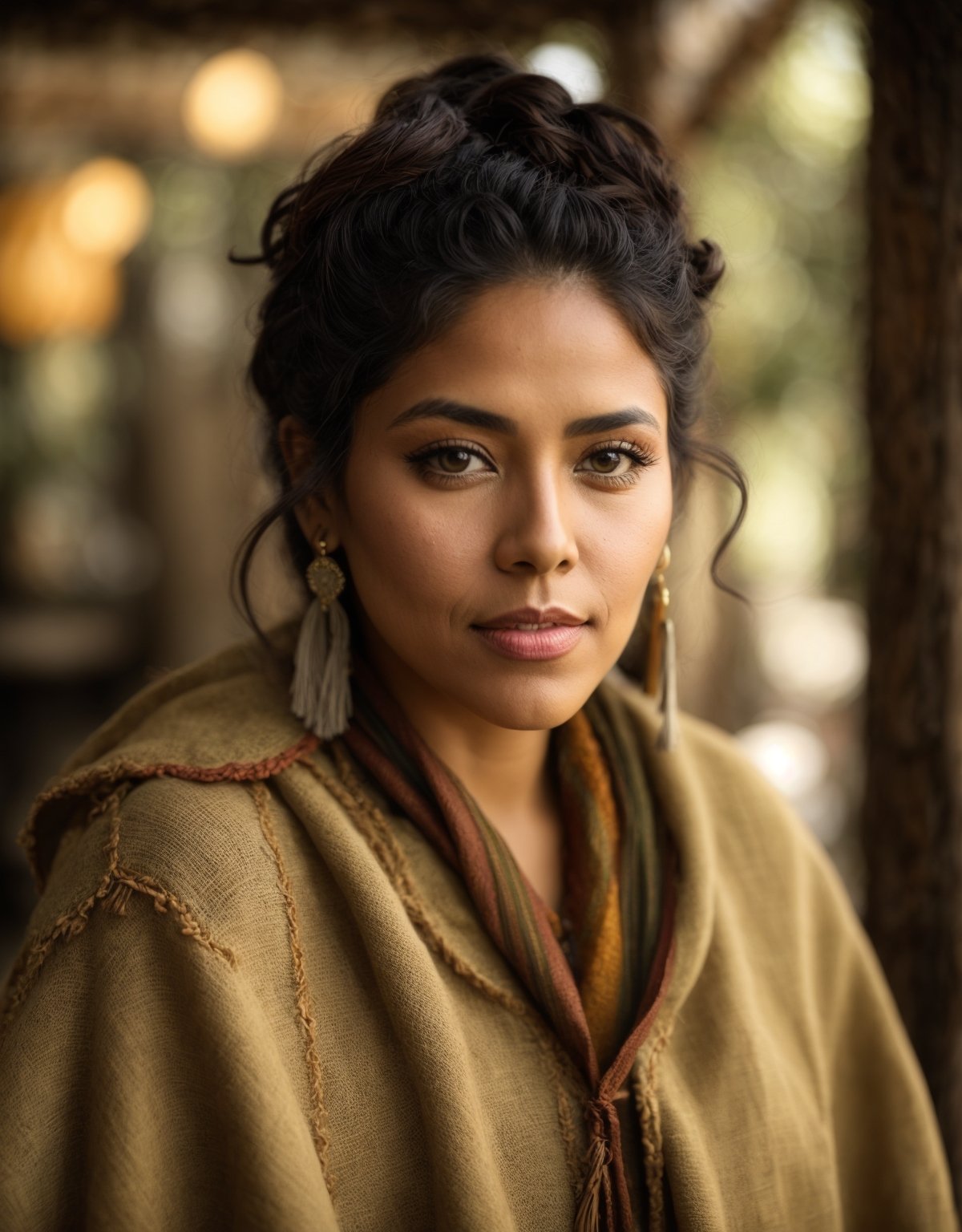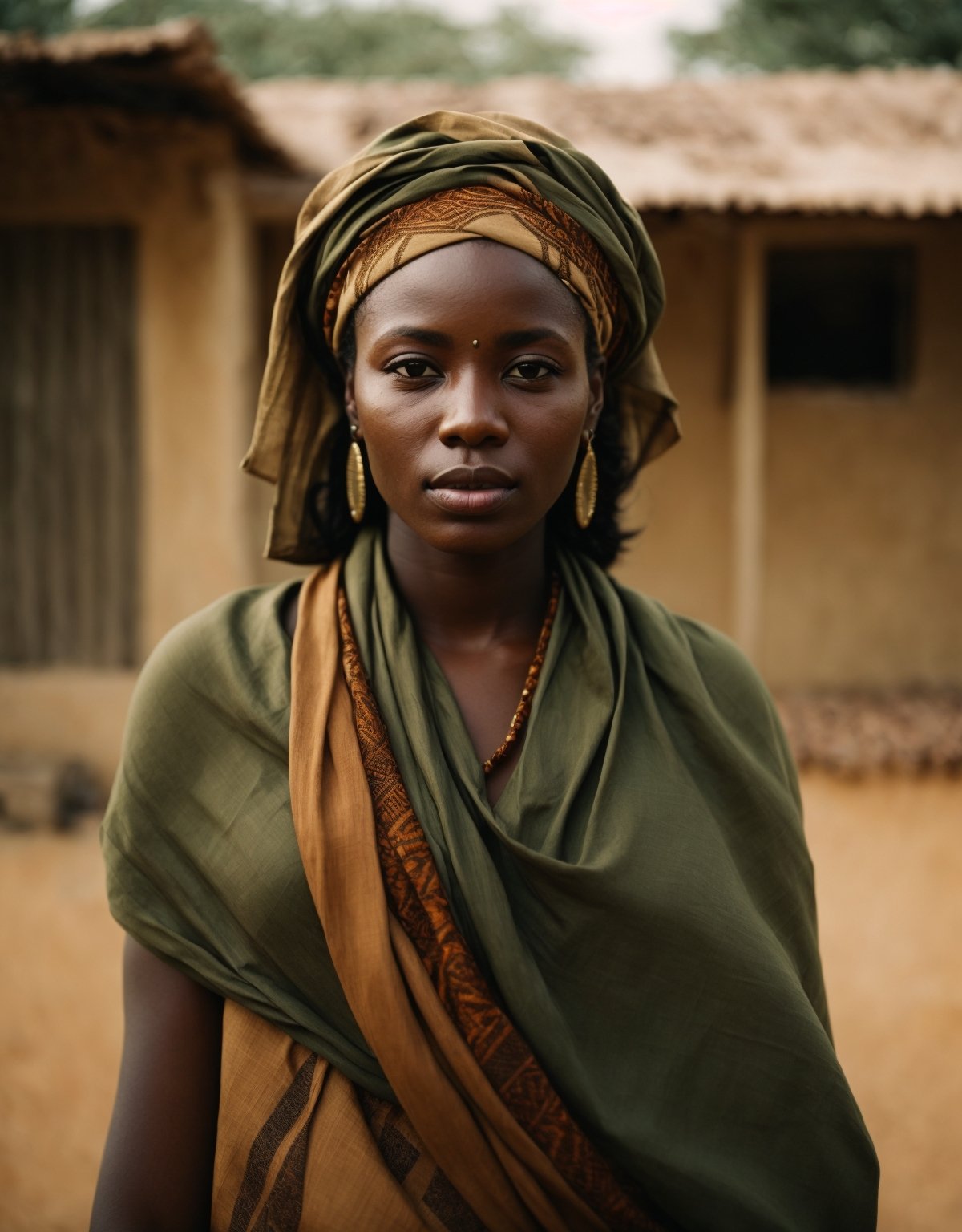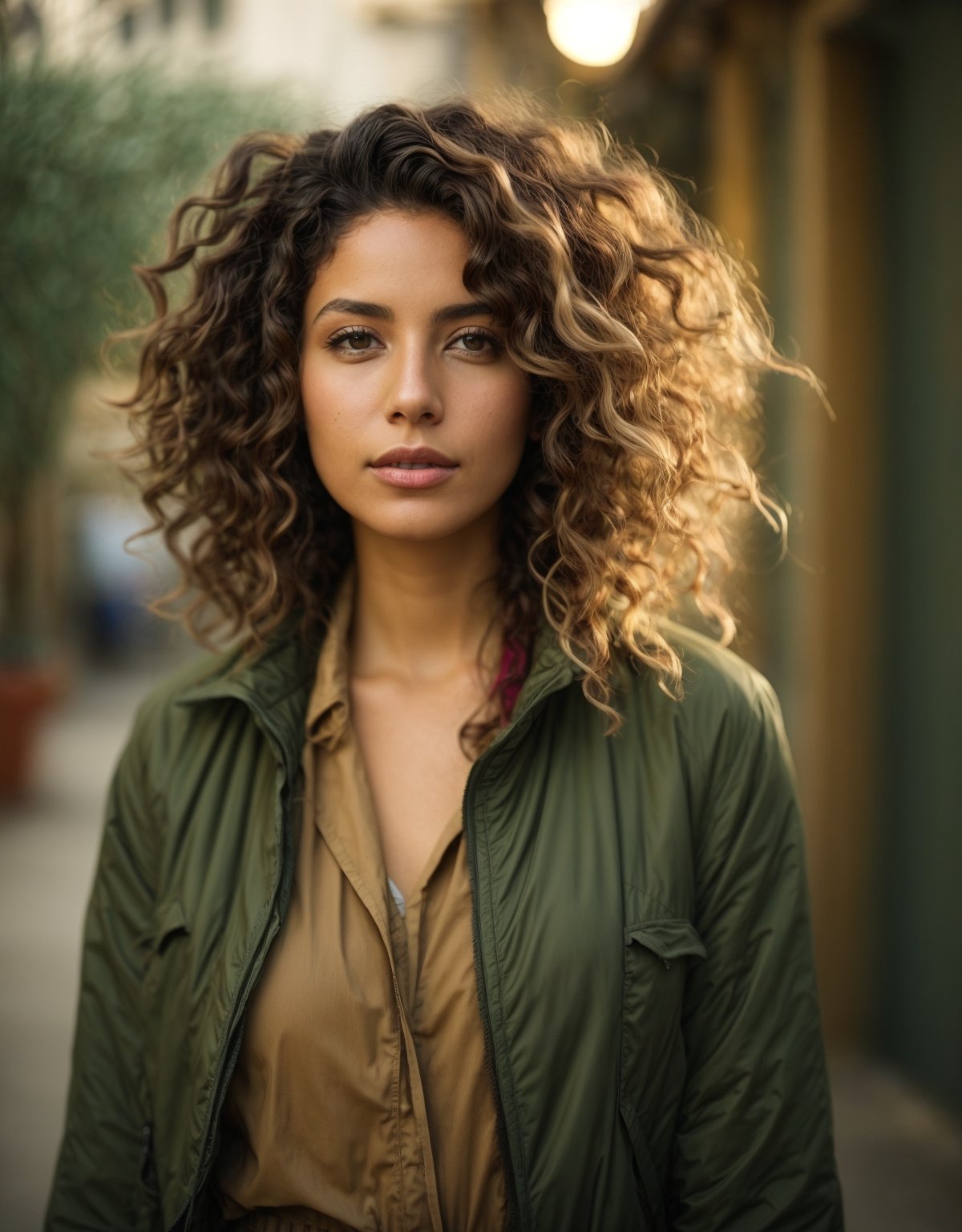Key Takeaways
- Beige and olive green are an earthy, natural color pairing for clothes and home decor.
- Opposite colors on the color wheel, like blue and orange, complement each other.
- Warm colors like red and yellow energize, while cool colors like green and blue calm.
- Soft pastels are trending for spring and brighter neons for summer.
- Know your color season – are you a Spring, Summer, Autumn, or Winter?
- Go for colors that enhance your skin tone, eyes, and hair color.
- Accessorize to tie together a color palette. Add pops of color.
- Feel confident in colors. Wear what flatters you, not just trends.

Combining earth tones such as beige and olive green creates a soothing color palette perfect for modern interiors. Neutral beige acts as a grounding base for brighter hues, contributing to a calming, zen-inspired atmosphere. Olive green introduces subtle depth and warmth, enhancing the natural, elemental aesthetic. Together, these earthy colors deliver a harmonious and tranquil look ideal for home decor.
Pairing Beige and Olive
Beige and olive green are perfect color partners for home decor. Beige, a light neutral shade, complements any color palette effortlessly. When combined with the versatile and calming tones of olive green, these colors create a soothing, earthy atmosphere ideal for any living space.
Beige Basics
Understated beige brings a relaxed, laidback vibe that blends seamlessly with other neutral colors such as white, tan, and cream. This versatile shade also helps balance out vibrant colors by toning them down. Light beige, in particular, creates a tranquil and calming atmosphere. For added depth, combine light beige with darker beige tones and rich brown hues. Use beige as a base color in your interior design and introduce accents in more saturated shades for a stylish, cohesive look.
Why Olive?
Olive is an earthy green paint color with subtle gray undertones. More versatile than Kelly green, olive green pairs beautifully with other neutral colors. This shade complements beige tones while adding visual interest to any space. Deep olive greens create a dramatic look, while lighter sage green hues offer a calming effect. Olive green is also flattering for most skin tones and complexions.
Natural Combination
Beige and olive have an elemental beauty. They evoke textures and tones found in nature – sandy beaches, weathered wood, and moss on stones. Organic combinations feel soothing in our hectic world. Flowy olive and beige outfits would suit a spa. Decorating with these earthy hues creates a relaxing retreat.
Complementary Colors
Colors that are opposite each other on the color wheel, known as complementary colors, create striking and visually appealing combinations. These complementary color pairings naturally draw attention and make designs more eye-catching.
Vibrant Contrast
Complementary colors have maximum contrast, which makes them pop. For example, orange and blue dynamically oppose each other. When placed together, they intensify. This makes complementary colors bold and lively. They are attention-getting and energetic.
Tricky to Balance
Too much complementary color contrast can strain the eyes. Balance is key. Often, one color dominates, with the other as accents. For furniture, use complementary colors sparingly. As accent wall colors, they liven up a neutral room. In clothing, pair a bright blue top with orange jewelry.
Color Wheel Pairings
Besides blue and orange, red and green are classic complements. Purple finds its match in yellow. For a softer look, combine analogous shades like red-orange with blue-green. Split complements like yellow-green and red-violet are easier on the eyes.

Psychology of Color
Beyond aesthetics, color has an impact on moods, feelings, and behaviors. Warm and cool colors elicit different responses.
Warm Colors
Red, yellow, and orange are energizing warm colors. Red symbolizes love, excitement, and intensity. Cheerful yellow boosts positivity. Orange combines red and yellow for creative inspiration. Decorating with warm hues makes room more stimulating.
Cool Colors
Green, blue, and purple are serene, cool colors. Green represents renewal and balance. Calming blue aids concentration. Purple mixes red and blue for a spiritual vibe. Cool-colored rooms have a tranquil ambiance.
Choosing Colors
Consider the mood you want to create when selecting colors. Warm hues energize, and cool colors relax. Use brighter shades sparingly for maximum impact. Combine warm and cool colors for visual interest and balance.
Latest Color Trends
Color trends evolve each season. Here are some current popular shades.
Spring Pastels
This spring, soft pastels like lilac, lemon, and mint are in style. These muted versions of brighter colors have a romantic, vintage appeal. Pair pastels with white for a dreamy aesthetic. Dusty shades of pink and blue also fit this trend.
Neon Brights
Vibrant neon colors heat up summer trends. Electric green, citron yellow, magenta, and cobalt blue pack a visual punch. Neons pair well with black, white, and gray for balance. Use neon accents against neutral backdrops. Florals in neon colors add retro flair.
Moody Hues
Deep, rich browns, burgundies, and hunter-greens create an earthy, moody feel that works for fall. These dramatic shades pair well with beige and cream. Add moody colors through velvet accents and colored glass. Dark walls create cozy warmth.
Finding Your Color Palette
Certain colors naturally complement your complexion, eyes, and hair. Know your colors.
Color Seasons
Figuring out your color season helps guide clothing and makeup choices. Are you a warm Spring or Autumn? Or a cool Summer or Winter? Online quizzes can help determine your season.
Skin Undertones
Check your veins to identify warm, cool, or neutral undertones. Greenish veins indicate warm tones that suit coral, yellow, and terra cotta. Bluish veins signal cool undertones for icy pink or mint shades. Hard to tell? You likely have a neutral skin tone.
Hair and Eyes
Does your hair and eye color have warmth or coolness? Warm brown, amber, and hazel eyes suit rich reds and oranges. Cool blue and green eyes stand out with purples and berries. Go for harmonizing shades.
Experiment
Try various colors against your face to see which are most flattering. Colors that make your skin glow are your best bet. Pay attention to how you feel in certain shades as well.

Pulling Together a Palette
A cohesive color palette creates harmony in your wardrobe or decor.
Neutral Foundation
Build your color scheme on basic neutrals like black, white, gray, navy, and beige. Neutrals go with anything for flexibility. Cream or tan work for a warm foundation, while gray and navy make a cool base.
Pops of Color
Add punches of color through accessories like scarves, pillows, and artwork. Vibrant shades attract attention and brighten up neutral backdrops. Repeat accent colors for cohesion.
Color Bridge
Tie together diverse colors by “bridging” them with shades in between on the color wheel, creating a gradient. For example, link red and green with shades of orange and blue.
Texture Interest
Incorporate different textures like wool, velvet, linen and leather to add depth to a color palette. Varied textures help colors pop.
Wearing Colors Confidently
Picking and wearing colors doesn’t have to be complicated. Focus on enjoying colors instead of following arbitrary rules.
Wear What Makes You Happy
Style is personal. Wear colors that delight you. One woman’s neutral beige is another’s vivid orange. Embrace your color preferences. Don’t let anyone dictate what hues you “should” wear.
Choose Flattering Shades
Make color selections based on what flatters your complexion, eyes, and hair. Feeling good in colors radiates confidence. Figure out which shades boost your inner glow.
Modify Trends
Add trendy colors in ways that work for you, like accessories or scarves. Try a bold lipstick rather than an entirely neon ensemble. Adapt trends to fit your style.
Take Color Risks
Step outside your comfort zone on occasion. Having the confidence to experiment with unique color pairings adds flair to your style. Start with subtle, colorful touches if bold hues feel daunting.

Brightening Neutrals with Colorful Accents
Inject zesty color into neutral foundations with eye-catching details and accessories.
Patterned Scarves
Scarves instantly brighten up neutral outfits. Try woven or printed styles in colors that pop against beige, tan, gray, and black. Add visual interest by tying scarves in different ways.
Jewelry
Jewelry offers an easy way to incorporate color into basics. Statement necklaces, cuff bracelets, and bold earrings in tones like emerald, sapphire, and coral make neutrals shine.
Handbags
Replace that everyday black or brown bag with a purse in a lively hue. Opt for a bag that complements your wardrobe’s color scheme. A colorful bag adds flair.
Sunglasses
Go for brightly-hued frames to accessorize neutral looks. Sunglasses in shades like cobalt, cherry, and lilac give off vacation vibes. Have fun playing with different tinted lenses.
Shoes
Inject color through fun shoes, like oxfords in teal or slip-ons in bright yellow. Colored shoes add flair to otherwise subdued outfits. They put a spring in your neutral step.
Artwork
Incorporate vibrant artwork and decor accents throughout your neutral living space. Paintings, pillows, vases and other items in punchy colors make neutrals sing.
Tips for Decorating with an Olive and Beige Palette
Bring soothing olive green and neutral beige into home decor.
Texture Combinations
Mix natural linens, cozy knits, and distressed leather in olive shades. Use sisal or jute rugs and wood accents. Add cohesion with beige tones in velvet, cotton, and wool.
Layered Lighting
Use varied light fixtures like pendant lamps, table lamps, and sconces in brushed metals and wood finishes. Layer lighting for dimension. Include olive glass shades or textured lampshades.
Artisanal Accessories
Choose ceramics, glassware, baskets, and Greenery in olive green. Display unique beige vases and bowls. Add handcrafted throws and pillows for texture. Use natural artifacts as decor.
Brick and Stone
Exposed brick or stone walls create an earthy backdrop for olive and beige decor. Wood paneling and hardwood floors also complement the color scheme. Add an emerald green door for character.
Outdoor Touches
Bring the outdoors in with plants and flowers in olive pots and beige planters. Ferns, ivy, and succulents enhance the earthy ambiance. Add a beige couch and olive reading chair.
Metallic Accents
Brushed bronze, copper, and nickel finishes and fixtures lend an industrial vibe. Metallics pair nicely with olive and beige. Add a unique olive and gold mirror or beige and silver sculpture.

Conclusion
Have fun with color! View it as a way to express your unique style. Home decor and clothing in soothing beige and olive green create a relaxing, natural feel. Complementary colors perk up neutral backgrounds.
Explore how different hues affect your mood and energy level. Find colors that make you glow. The right colors can boost your confidence and outlook. Don’t be afraid to take risks and get creative with vibrant hues and combinations in accessories and accents. Color is infinite – have fun with it!
Summary Table
| Color Combos | Psychology | Trends |
|---|---|---|
| Beige + Olive | Warm colors energize Cool colors relax | Pastels for spring Neons for summer |
| Complementary colors | Red – love, excitement Orange – creativity Yellow – positivity | Moody hues for fall – deep reds, greens |
| Analogous colors | Green – renewal, balance Blue – concentration |
Frequently Asked Questions
How do olive and beige work together?
Beige is a light neutral that provides a flexible base, while olive green injects soft contrast, creating an earthy, relaxing look. They complement each other nicely as soothing natural tones.
What are some examples of complementary colors?
Classic color wheel complements are red & green, blue & orange, and purple & yellow. Other pairings like blue-green with red-orange (split complements) also provide vibrant contrast.
How can I add color to a neutral wardrobe?
Lively accessories like scarves, handbags, shoes, and jewelry easily incorporate color into neutral basics. Bold makeup and nail polish also punch up neutrals.
What are warm and cool colors?
Warm colors like red, yellow, and orange feel energizing and uplifting. Cool colors such as blue, green, and purple have a more calming effect.
How do I pick colors that suit me?
Determine your color season and undertones to help guide flattering color choices. Experiment to see which shades make your eyes pop or skin glow.

What are popular spring 2023 colors?
This spring, light pastels like lemon yellow, lavender, pistachio, and azure blue are prevalent. These soft hues pair nicely with crisp white.
How can I use olive green in my home?
Textiles like wool, linen, and velvet in olive tones, coupled with wood furniture and natural artifacts, help bring this earthy color into home decor.
What colors go well with beige?
Other neutrals like white, tan, cream, and brown complement beige. Beige also pairs nicely with pastels and moody, rich colors. It is very versatile.
How do I create a cohesive color scheme?
Start with neutrals you love, like beige, olive, white or black. Add accent colors that complement each other from the color wheel for a harmonious palette.

Matthew Mansour, known in the fashion world as a storytelling virtuoso, weaves captivating tales centered around the mesmerizing universe of fashion hues. Possessing a sharp eye for detail, Matthew explores the profound layers of color combinations, turning the simple act of choosing an outfit into a lively adventure. His unique ability to blend emotion and innovation into his writings sets him apart in the sartorial sphere. Each article penned by him carries a touch of magic, inspiring readers to embark on a colorful odyssey through the diverse landscape of apparel shades.
Reviewed By: Joanna Perez and Anna West
Edited By: Lenny Terra
Fact Checked By: Marcella Raskin
Photos Taken or Curated By: Matthew Mansour
